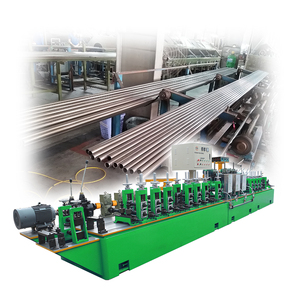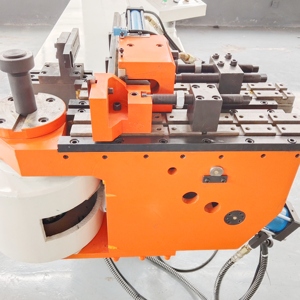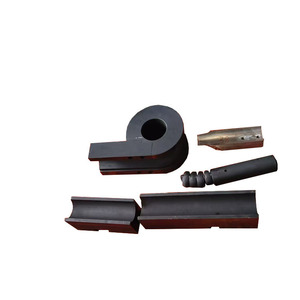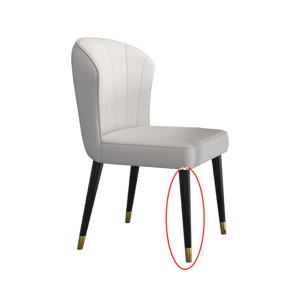
All categories
Featured selections
Trade Assurance
Buyer Central
Help Center
Get the app
Become a supplier

(276 products available)






































Market Overview: The railing pipe making machine market has experienced notable growth, paralleling the broader trends in industrial machinery. According to Research and Markets, the global linear guide rail market, which includes components relevant to pipe making machinery, grew from USD 391.13 million in 2023 to USD 419.14 million in 2024, with a projected CAGR of 7.67% reaching USD 656.24 million by 2030. This growth is primarily driven by increased automation in manufacturing and the rising demand for precision equipment. As industries adopt advanced manufacturing processes, the need for reliable and efficient machinery, including railing pipe making machines, becomes increasingly critical. The market's expansion reflects a growing consumer preference for customized products and enhanced production capabilities, particularly in construction and infrastructure sectors.
Regional Insights: The demand for railing pipe making machines is significantly influenced by regional industrial activities. The Asia Pacific region is expected to be the fastest-growing market, supported by China's booming manufacturing sector and substantial investments in automation. Meanwhile, the Americas, led by the United States, showcase strong growth due to a rebound in manufacturing and a focus on automation technologies. In contrast, the EMEA region presents a varied landscape, with Europe leading in demand, particularly in automotive and aerospace industries. However, challenges such as high initial costs and maintenance requirements persist, potentially deterring some consumers. The market is also witnessing shifts in consumer behavior, with an increasing emphasis on sustainability and efficiency, creating opportunities for manufacturers to innovate and meet evolving industry standards.
A railing pipe making machine is used to produce pipes that can be used as railings. These pipes are usually made of materials such as stainless steel, carbon steel, and aluminum. Depending on the material, different machines are required for the production process. The following are some commonly used pipe-making machines that help create railings and support systems.
Galvanized Pipe Making Machine
This machine is used when galvanized iron pipes are required for railings. This machine creates a product that is corrosion-resistant and can be used for outdoor railings.
SS Pipe Making Machine
Stainless steel is now one of the most popular materials used for railings. Machines that help create stainless steel pipes come with a full range of processes from slitting to roll forming and cutting. The durable stainless steel provides strength to the railing structure.
Aluminum Pipe Making Machine
Aluminum is a lightweight material that is easy to install. An aluminum railing pipe making machine will create pipes that provide traders with a lightweight optional material that is also resistant to corrosion and oxidation.
Automatic Pipe Welding Machine
Automatic welding machines control the welding speed and feeding speed of the filler wire during the welding process. These machines use different methods, such as submerged arc, electrogas, and gas flow arc welding. They help create seamless pipes that can be used for railings.
Pipe Bending Machine
This machine makes the straight pipe sections into curved shapes that can be used for railings. Depending on the type of machine, some will use hydraulic force to bend the pipes. Others will apply CNC control technology for precision bending. The pipe is made of material that is soft enough to bend into required dimensions.
Railing pipe making machines can be used in various scenarios across different industries and applications. Here are some of the most common scenarios in which these machines are used:
Determine Material Compatibility:
Verify that the machine can process the materials intended for use. Consider factors such as the material's thickness, the grade of stainless steel, and any specific coating requirements.
Assess Production Capacity:
Consider the required production volume and the machine's capacity to meet those demands. Factor in the speed of the machine, the number of pipes produced per hour, and any potential for automation.
Evaluate Pipe Specifications:
Determine whether the machine can manufacture pipes of the desired diameter, length, and wall thickness. Ensure the machine can accommodate the specific pipe dimensions required for applications.
Check for Customization Options:
If there is a need for unique pipe designs or features, look for machines with customization options. More additional configurations might be accessible, such as incorporating threads, flanges, or embossed patterns.
Assess Tooling and Die Requirements:
Consider the machine's tooling and die requirements and the availability and cost of these accessories. Ensure the required tooling is readily obtainably and compatible with the chosen machine.
Evaluate Space and Layout Considerations:
Consider the space and layout of the production facility. Ensure the size and footprint of the machine will fit within the available space and can be conveniently integrated into the production line.
Assess Maintenance and Support:
Evaluate the machine's maintenance requirements and technical assistance. Choose a machine that is easy to maintain and adequately supported by the supplier to minimize downtime and production interruptions.
Consider Safety Features:
Prioritize machines with robust safety features, such as emergency stop buttons, safety guards, and protection. These features help ensure the operator's safety and reduce the risk of accidents.
Q1: What raw materials are used by the railing pipe making machines?
A1: Metal coils or strips, usually galvanized steel, stainless steel, or carbon steel, are the most common materials. Besides, some machines may use aluminum, copper, or other alloys depending on the specific requirements and characteristics of the railings to be produced.
Q2: Can the railing pipe making machine tailor pipes according to specific dimensions and requirements?
A2: Yes, in general, machines can customize pipes according to specific dimensions and requirements, such as the size, thickness, material, and surface finish of the railing pipes. Moreover, some machines may also have the capability to produce specialized types of railing pipes, such as those with unique designs or shapes.
Q3: Is it easy to operate the railing pipe-making machine?
A3: The operation complexity varies depending on the machine type and model. In general, it's not too complicated to operate a machine with an instruction manual. However, it is better to have some knowledge about the machine and its function, as well as some basic technical skills, to operate it properly and safely.
Q4: What are the different types of railing pipe-making machines?
A4: They are usually made by using the cold bending or hot rolling process. The cold bending process uses a cold roll railing pipe machine, and the hot rolling process uses a hot rolling railing pipe machine.
Q5: What are the production speeds of the railing pipe-making machines?
A5: The production speed depends on the machine type and model. The speed may be 1,000-3,000 meters per hour for automated machines, while that for semi-automatic machines is about 300-800 meters per hour.